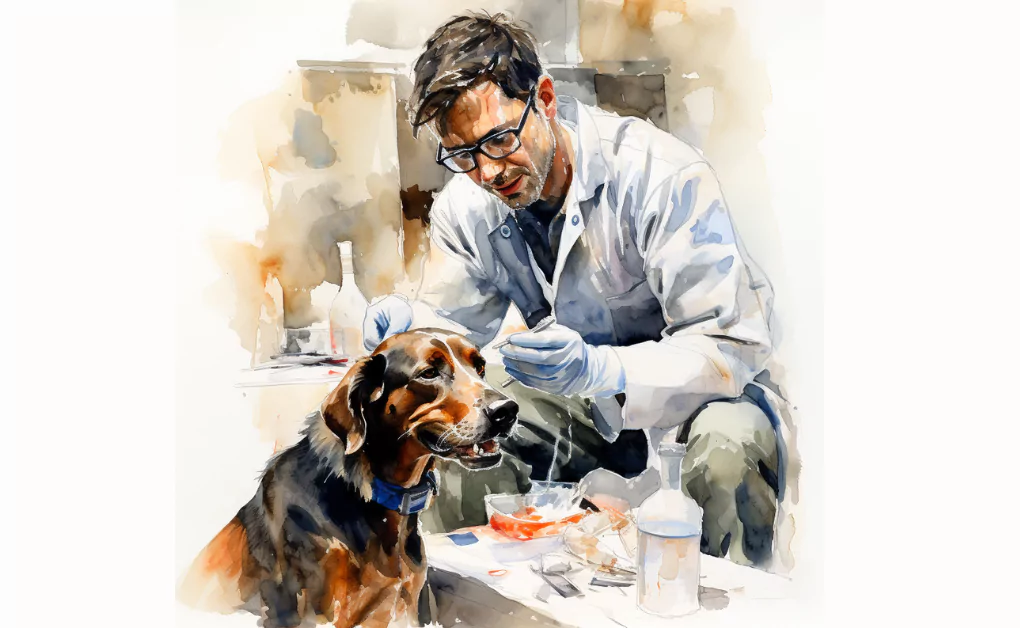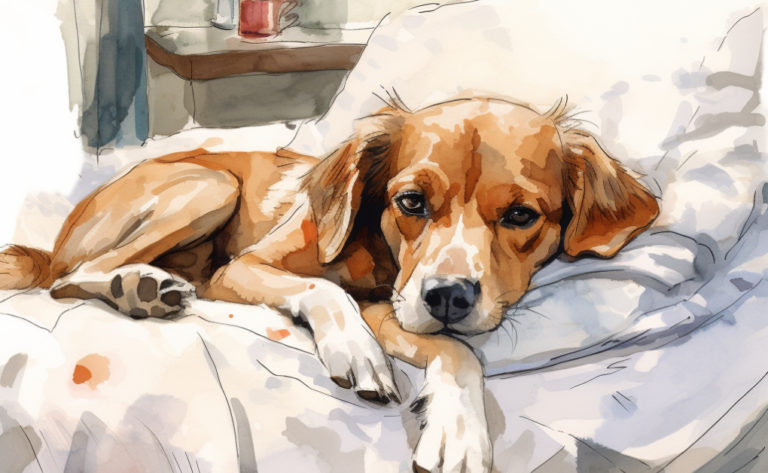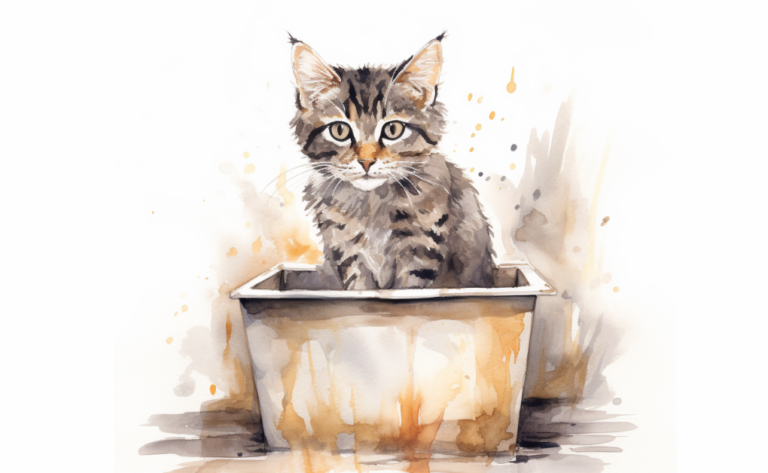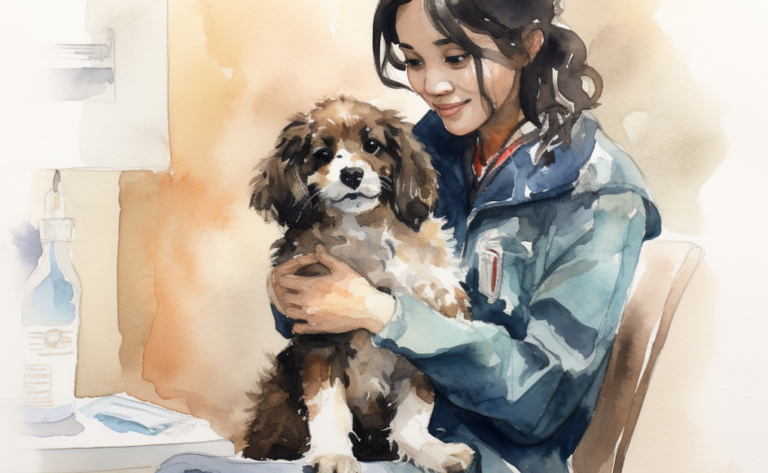Glaucoma in Dogs: Causes, Symptoms, Treatment
What is it?
How is it Treated?
Breed Predispositions
Introduction
For Bella, her spirited Labrador Retriever, Max, had always been the perfect companion. She cherished their daily walks and playtime in the park. But one day, she noticed that Max was bumping into objects and seemed disoriented. Concerned about her beloved pet’s sudden change in behavior, Bella took Max to the veterinarian for a comprehensive examination. The vet diagnosed Max with glaucoma, a serious eye condition that can affect dogs.
Glaucoma is an eye disease in dogs that can significantly threaten their vision. It arises when an imbalance in the production and drainage of aqueous humor – the clear fluid nourishing and maintaining the eye’s shape – increases intraocular pressure (IOP), the pressure inside the pet’s eye. An estimated 40 percent of dogs may develop glaucoma in either one or both eyes. The escalating pressure can potentially harm the optic nerve, which conveys visual data from the eye to the brain. If left unaddressed, glaucoma could cause vision impairment, even blindness in dogs.
Glaucoma in dogs presents as an acute eye condition marked by a rise in the eye’s internal pressure, known as intraocular pressure (IOP). This heightened pressure can damage the optic nerve, jeopardizing the transmission of visual signals from the eye to the brain and may result in vision loss or even total blindness if not promptly treated. Glaucoma can affect one or both of a dog’s eyes and is typically classified as primary or secondary based on the root cause. This condition can progress rapidly, making it imperative for pet owners to observe their pets’ eye health and seek immediate veterinary care if they notice any abnormalities, such as corneal edema.
Types of Glaucoma in Dogs
Glaucoma is a condition characterized by increased pressure within the eye, which can lead to damage to the optic nerve and potential vision loss. In dogs, there are two main types of glaucoma: primary and secondary glaucoma.
- Primary Glaucoma: Primary glaucoma refers to glaucoma that occurs spontaneously without any identifiable underlying cause. It is believed to have a genetic component and is more commonly seen in certain breeds, such as Cocker Spaniels, Basset Hounds, and Siberian Huskies. Primary glaucoma can be further classified into open-angle glaucoma and closed-angle glaucoma.
- Open-angle glaucoma: This is the most common form of primary glaucoma in dogs. It occurs when there is a problem with fluid drainage from the eye, leading to a gradual increase in intraocular pressure over time. It typically affects both eyes and progresses slowly.
- Closed-angle glaucoma: This is a less common form of primary glaucoma and occurs when the eye’s drainage angle becomes blocked suddenly. It can cause a rapid increase in intraocular pressure and is often a more severe and painful condition.
- Secondary Glaucoma: Secondary glaucoma occurs due to an underlying eye condition or disease, such as uveitis (inflammation of the eye), lens luxation (dislocation of the lens), or trauma. The increased pressure in the eye is a consequence of the primary condition. Secondary glaucoma can affect one or both eyes, depending on the underlying cause.
It’s important to note that both primary and secondary glaucoma require prompt veterinary attention. Early detection and appropriate management are crucial to help preserve vision and alleviate pain and discomfort in affected dogs. In addition, regular eye examinations and intraocular pressure monitoring are essential for at-risk breeds or dogs with predisposing factors for glaucoma.
Causes of Glaucoma in Dogs
Glaucoma in dogs can result from various underlying factors that lead to increased intraocular pressure (IOP). Therefore, identifying the specific cause is essential for effective treatment and management of the condition. Some common causes of glaucoma in dogs include:
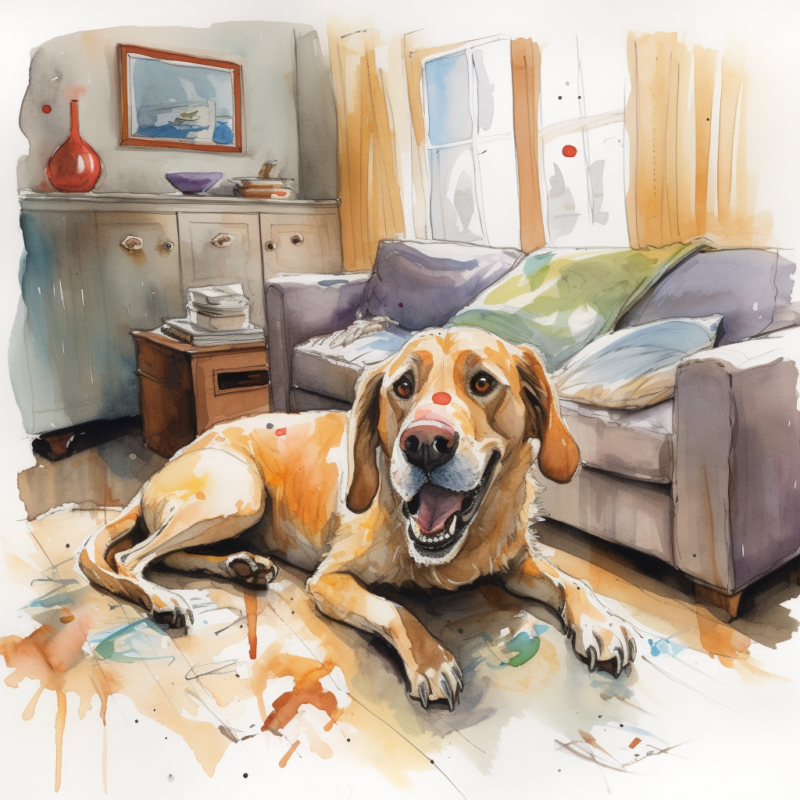
- Primary Glaucoma: This form of glaucoma is typically inherited and occurs when the genetic predisposition affects the eye’s drainage system. As a result, fluid accumulates within the eye, leading to increased pressure. Certain breeds, such as American Cocker Spaniels, Basset Hounds, and Beagles, are more prone to primary glaucoma.
- Secondary Glaucoma: Secondary glaucoma develops due to another eye-related condition or disease. Secondary glaucoma causes inflammation, infection, trauma, tumors, or lens dislocation. These conditions can obstruct the normal drainage of fluid from the eye, resulting in elevated IOP.
- Angle-Closure Glaucoma: This type of glaucoma occurs when the drainage angle between the cornea and iris becomes too narrow, impeding fluid outflow from the eye. The blockage can lead to a sudden, dramatic increase in IOP, causing a painful and potentially sight-threatening emergency.
- Uveitis: Inflammation of the uveal tract, which includes the iris, ciliary body, and choroid, can lead to glaucoma. The inflammation can obstruct fluid drainage and cause increased IOP.
- Lens Luxation: Dislocation of the lens within the eye can block the fluid flow, resulting in secondary glaucoma.
Understanding the possible causes of glaucoma in dogs can help pet owners and veterinarians take appropriate preventive and treatment measures to maintain the dog’s eye health and vision.
Symptoms of Glaucoma in Dogs
The symptoms and clinical signs of glaucoma in dogs can vary depending on the severity and progression of the condition. Here is a list of common symptoms to watch for:
- Redness or bloodshot eyes
- Cloudiness or a bluish tinge to the cornea
- Eye pain, which may be indicated by squinting, rubbing, or pawing at the eye
- Swelling or enlargement of the affected eye (buphthalmos)
- Tearing or discharge from the eye
- Sensitivity to light (photophobia)
- Vision loss or difficulty seeing, particularly in dimly lit environments
- Changes in the appearance of the pupil, such as unequal size or irregular shape
- Behavioral changes, such as lethargy or loss of appetite, which could indicate discomfort

Diagnosing Glaucoma in Dogs
Diagnosing glaucoma in dogs requires a thorough examination and various tests performed by a veterinarian or veterinary ophthalmologist. Early detection is critical for effective treatment and preservation of vision. Here are some steps and tests commonly used to diagnose glaucoma in dogs:
- Medical history and physical examination: The veterinarian will start by reviewing the dog’s medical history, breed predispositions, and any signs or symptoms observed by the owner. A general physical examination helps rule out other health issues that may cause similar symptoms.
- Tonometry: This is a crucial test for diagnosing glaucoma. It involves measuring the intraocular pressure (IOP) using a specialized instrument called a tonometer. Elevated IOP readings can indicate glaucoma, while regular readings can help rule it out.
- Ophthalmic examination: The veterinarian will closely examine the dog’s eyes, checking for redness, swelling, cloudiness, or changes in the size or shape of the eyeball. They will also assess the dog’s pupil size, response to light, and ocular reflexes.
- Gonioscopy: This procedure is performed to evaluate the drainage angle within the eye. A unique Gonio lens is placed on the eye’s surface to visualize the area where fluid drains from the eye. If the drainage angle is abnormally narrow or closed, it could be a sign of angle-closure glaucoma.
- Ophthalmoscopy: The veterinarian will examine the back of the eye, including the retina and optic nerve head, using an ophthalmoscope. This allows the veterinarian to check for signs of damage, such as cupping of the optic nerve head, which can occur in glaucoma.
- Ultrasound and imaging studies: In some cases, ultrasound, CT scans, or MRI may be used to evaluate the eye’s internal structures and look for underlying causes of secondary glaucoma, such as tumors or lens luxation.
Combining these diagnostic tests and examinations allows the veterinarian to accurately diagnose glaucoma in dogs and determine the most appropriate treatment plan.
Treatment for Glaucoma in Dogs
Under veterinary ophthalmology, treatment for glaucoma in dogs primarily aims to mitigate intraocular pressure (IOP), alleviate discomfort, and maintain visual ability. The precise treatment plan is contingent upon the severity of the glaucoma, the root cause, and the dog’s overall health. Various treatment options exist for managing glaucoma in dogs, including:
- Prescribed Medications: Eyedrops, and oral medication, often form part of the glaucoma medication used to control the condition. These treatments reduce the aqueous humor production or enhance its outflow, thereby decreasing IOP. Typically prescribed medications encompass prostaglandin analogs, beta-blockers, carbonic anhydrase inhibitors, and alpha agonists. In addition, in certain instances, oral corticosteroids or nonsteroidal anti-inflammatory drugs (NSAIDs) may be prescribed as a treatment option to minimize inflammation.
- Laser Treatment: Laser therapy, such as laser trabeculoplasty or cyclophotocoagulation, might be suggested to lower IOP. This procedure utilizes a concentrated beam of light to alter the iridocorneal angle or to obliterate the ciliary body – the eye section responsible for producing aqueous humor.
- Surgical Intervention: The surgical removal of the eye, known as enucleation, may become necessary in extreme cases where the dog’s vision is lost and pain is unmanageable. Other surgical options, when medications and laser therapy fail to regulate IOP, include implanting a drainage device such as a shunt, valve, or gonioimplantation.
- Management of Underlying Issues: If the glaucoma is secondary to another ocular condition like uveitis or lens luxation, addressing the primary issue is vital for the effective treatment of glaucoma.
- Ongoing Supervision: Regular visits to the veterinarian and continuous IOP monitoring are vital for managing glaucoma and modifying the treatment plan as necessary. Prophylactic treatment also forms part of ongoing management in certain cases.
The practice of veterinary medicine, specifically when it involves medical or surgical treatment for conditions like glaucoma, requires a comprehensive and considerate approach for the best outcome.
How to Prevent Dogs From Having Glaucoma
Mitigating the risk of glaucoma in dogs can pose a challenge, primarily due to factors like genetics that remain beyond our control. Nevertheless, several proactive measures can be implemented to either prevent glaucoma or facilitate its early detection, thereby helping to preserve your dog’s sight and comfort:
- Routine Veterinary Appointments: Regular check-ups with your veterinarian can facilitate the early identification of any eye irregularities, including symptoms of glaucoma. An early diagnosis and commencement of treatment can drastically enhance the prognosis.
- Understanding Breed-Specific Risks: Certain breeds, such as Cocker Spaniels, Poodles, Basset Hounds, and Siberian Huskies, are more predisposed to glaucoma. If your dog belongs to one of these breeds, be vigilant in observing their eye health, and do not hesitate to seek veterinary advice should you detect any changes.
- Maintaining a Healthy Lifestyle: Ensuring your dog enjoys a balanced diet, routine exercise, and a healthy weight can prevent the onset of underlying health issues that could potentially lead to the development of glaucoma. In addition, remember that your dog will need consistent care throughout different seasons, integrating elements of seasonal pet care into their routine.
- Regular Eye Examinations: Request that your veterinarian conducts a comprehensive eye examination, including intraocular pressure (IOP) measurement, at least annually or more frequently if your dog is susceptible to glaucoma.
- Immediate Treatment of Eye Injuries: Any trauma to the eye could potentially result in secondary glaucoma. If your dog suffers an eye injury, ensure that they receive immediate veterinary care to minimize the risk of complications.
- Regular Monitoring for Eye Infections and Inflammation: Infections can also trigger secondary glaucoma. Inspect your dog’s eyes for signs of redness, discharge, or discomfort, and consult your veterinarian at the first sign of any issues.
- Medication Caution: Some medications can heighten the risk of glaucoma. Always adhere to your veterinarian’s advice concerning medication usage and dosage.
While entirely preventing glaucoma, especially in genetically predisposed dogs, may not be feasible, the above steps can aid in reducing the risk. More importantly, they can ensure early detection and treatment, which is vital in managing the condition and preserving your dog’s vision.
Frequently Asked Questions
Disclaimer: The information provided on this veterinary website is intended for general educational purposes only and should not be considered as a substitute for professional veterinary advice, diagnosis, or treatment. Always consult a licensed veterinarian for any concerns or questions regarding the health and well-being of your pet. This website does not claim to cover every possible situation or provide exhaustive knowledge on the subjects presented. The owners and contributors of this website are not responsible for any harm or loss that may result from the use or misuse of the information provided herein.

